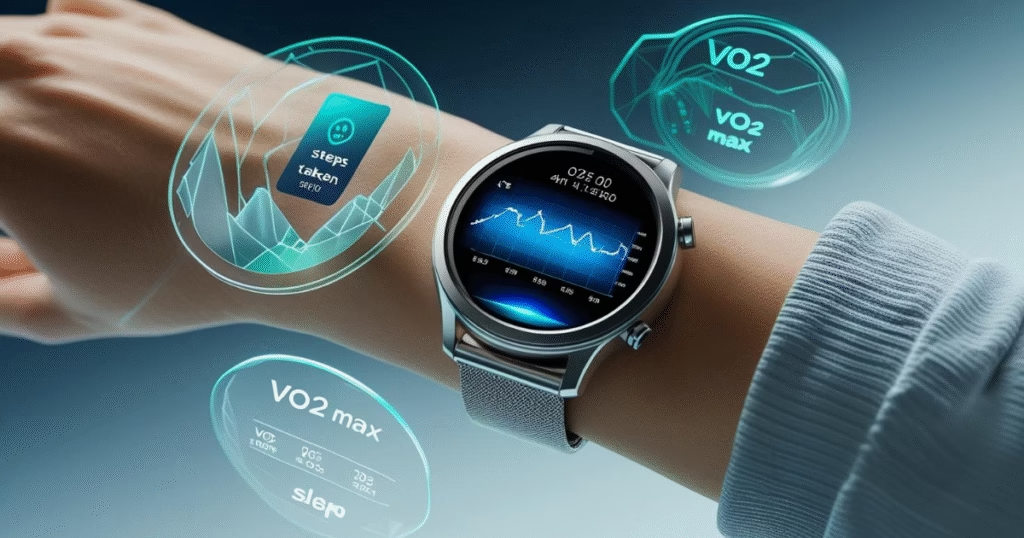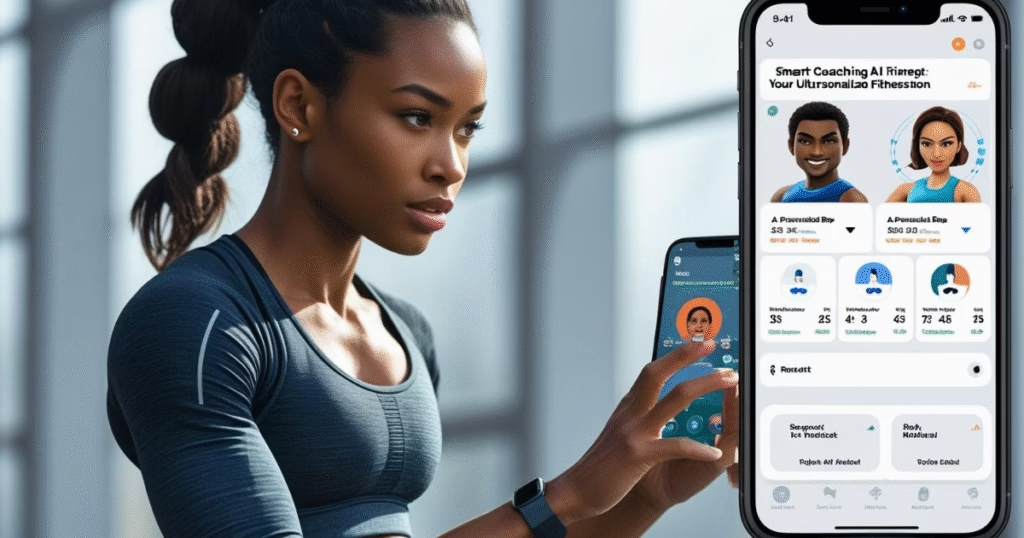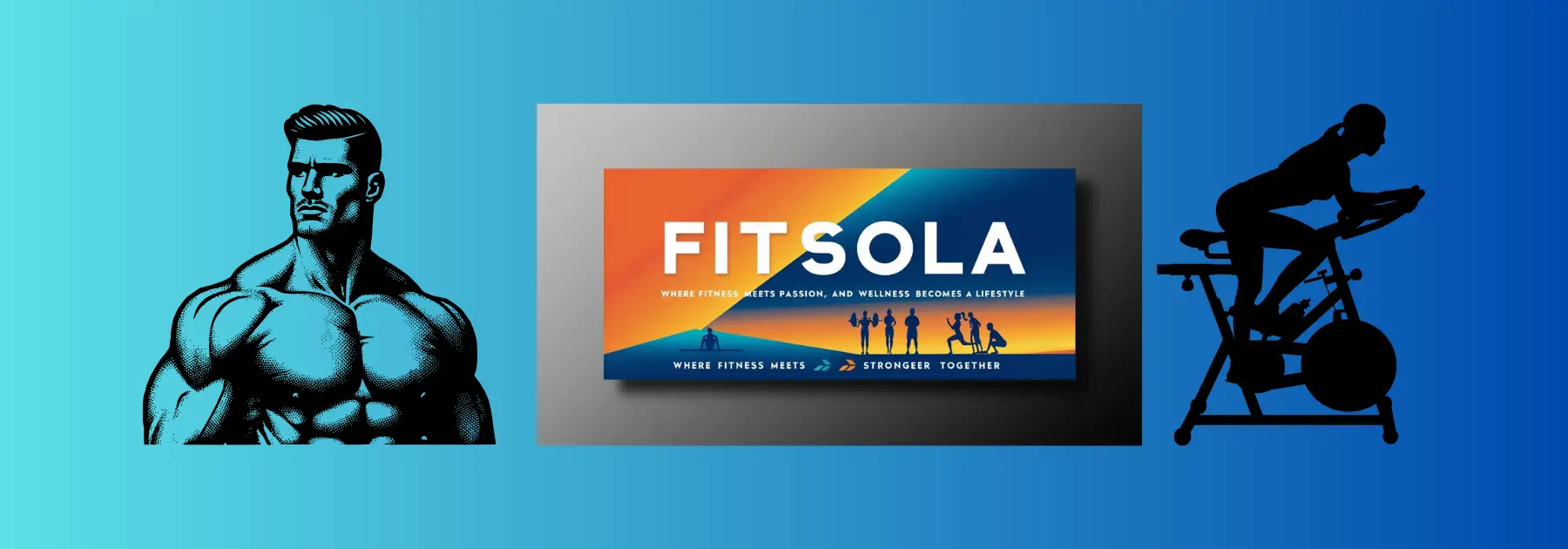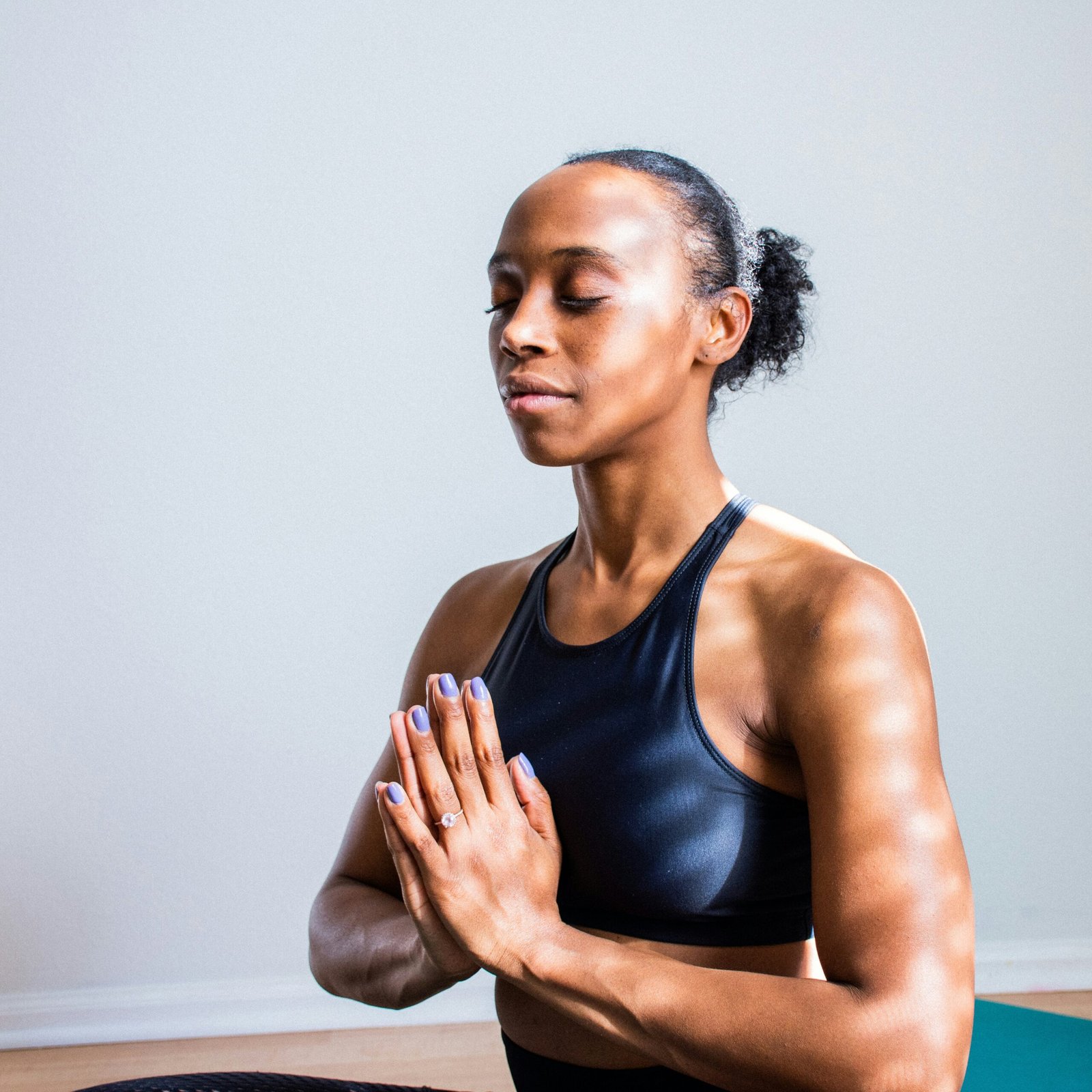The morning light, casting a golden glow over the horizon, often prompts me to think about progress. Not just the daily grind, but the relentless march of innovation, shaping our fitness future. And nowhere is that evolution more palpable right now than at the intersection of technology and fitness.
Remember when “fitness tech” meant a clunky pedometer or maybe a heart rate monitor with a chest strap that always slipped? Times have changed, my friends. We’re living in an era where our workouts are smarter, more personalized, and more engaging than ever before. From the clothes we wear to the screens we interact with, technology is no longer just an accessory to our fitness journey; it’s becoming an integral, often invisible, part of it.
For a long time, the world of fitness felt… analog. You had your gym, your weights, your running shoes. Progress was measured in reps, miles, and maybe a scribbled note in a journal. While the fundamentals of hard work and consistency will never change, how we track, optimize, and experience that hard work has been utterly transformed. This isn’t just about gadgets; it’s about a fundamental shift in how we approach our health, making it more data-driven, accessible, and frankly, a lot more fun.
If you’ve ever felt stuck in a fitness rut, struggled with motivation, or just wondered if you’re truly getting the most out of your efforts, the future of fitness tech holds some incredible answers. It’s about empowering you with insights, guidance, and community that were once only available to elite athletes. It’s about leveraging innovation to help you unlock your full potential, right here, right now.
So, buckle up. We’re going to dive deep into how technology is redefining fitness, exploring the best tools and trends that are shaping this exciting future. Whether you’re a seasoned athlete or just trying to get off the couch, understanding these advancements can revolutionize your approach to health and wellness.
The Wearable Revolution: Your Body’s Personal Data Scientist
Perhaps the most visible sign of tech meeting muscle is on our wrists, fingers, and even under our clothes. Wearable technology has moved far beyond simple step counting.
1. Smartwatches & Fitness Trackers:
Devices like the Apple Watch, Garmin Fenix, and Fitbit are now ubiquitous, but their capabilities have exploded. They track far more than just steps and calories burned.
- Heart Rate Variability (HRV): This advanced metric, now common in many wearables, measures the variation in time between your heartbeats. A higher HRV generally indicates a well-rested, resilient nervous system, while a lower HRV can suggest stress, fatigue, or overtraining. It’s a powerful tool for understanding your recovery.
- Sleep Tracking: Beyond just logging sleep duration, modern wearables can analyze sleep stages (REM, deep, light), restlessness, and even blood oxygen levels during sleep. This data is crucial because recovery happens when you sleep. Understanding your sleep patterns helps you optimize rest for better performance and overall health.
- Stress Monitoring: Many devices now incorporate algorithms to estimate stress levels throughout the day based on HRV and other physiological signals, often prompting users to take a moment to breathe or meditate.
- Activity & Recovery Coaching: Higher-end devices from brands like Garmin (with features like “Body Battery” and “Training Status”) use all your collected data to give you personalized recommendations on when to push hard, when to recover, and if your training is actually producing results.

2. Smart Rings (e.g., Oura Ring):
These sleek, minimal devices offer a deep dive into your biometrics, often with an emphasis on sleep and recovery. Because they’re worn on the finger, they can sometimes gather even more accurate physiological data than a wrist-based device. They excel at providing granular insights into sleep quality, readiness scores, and subtle changes in your body that might indicate illness or overtraining.
3. Smart Apparel & Patches:
The next frontier for wearables is integrating sensors directly into clothing. Think shirts that track muscle activation, shorts that monitor running form, or patches that continuously track glucose levels for advanced metabolic insights. While still emerging for the mass market, these technologies promise even more precise, real-time feedback.
Why this matters: Wearables turn your body into a living data stream. They provide objective feedback that helps you move beyond guessing. Are you truly recovered? Is that new workout actually effective? Are your stress levels impacting your sleep? This data empowers you to make smarter decisions about your training, nutrition, and recovery, leading to more sustainable and effective results.
Prefer watching over reading? I dive deeper into topics like this in my YouTube videos. Join me there for actionable insights
The Connected Gym & Home Fitness: Your Workout, Everywhere
The traditional gym model is evolving, and the rise of connected fitness has transformed how we access and experience workouts, whether at home or in a dedicated facility.
1. Smart Home Gym Equipment:
Platforms like Peloton, Tonal, Mirror, and Hydrow have revolutionized home workouts.
- Peloton: Beyond the bike, Peloton offers treadmills, strength classes, and yoga, all delivered through engaging instructors and live or on-demand classes. The communal, competitive aspect makes home workouts feel like a group class.
- Tonal: This smart strength training system uses digital weights and AI to provide personalized workouts, track your reps, adjust resistance, and even spot you when you’re struggling. It’s a compact, comprehensive strength solution.
- Mirror/Tempo: These smart screens offer a vast library of guided workouts, from HIIT to yoga, with instructors providing real-time feedback. It’s like having a personal trainer in your living room.
2. Virtual Reality (VR) & Augmented Reality (AR) Fitness:
While still relatively niche, VR fitness (e.g., Supernatural on Meta Quest) is gaining traction. Imagine boxing in a virtual arena, dancing through fantastical worlds, or hiking a mountain trail from your living room. AR experiences, like those that overlay workout instructions onto your real-world environment, are also emerging.
Why this matters: Connected fitness removes geographical barriers and often reduces the psychological friction of getting to a gym. It offers variety, expert guidance, and a sense of community, making it easier to stay consistent. VR/AR adds a layer of immersion and gamification that can make workouts incredibly engaging, perfect for those who struggle with traditional exercise boredom.
Smart Coaching & AI Personalization: Your Ultra-Personalized Fitness Journey
The future of fitness isn’t just about collecting data; it’s about using that data to provide truly personalized guidance. This is where Artificial Intelligence (AI) and advanced coaching platforms come into play.

1. AI-Powered Coaching Apps:
Apps like Future, Jefit, or Ladder (for strength training) leverage AI to analyze your performance, recovery data from wearables, and stated goals to create dynamic, evolving workout plans.
- They can adjust your weights, reps, or rest periods based on how you performed in your last session.
- They can recommend deload weeks when signs of overtraining appear.
- They can even integrate nutritional advice.This level of personalized programming was once only accessible through expensive human coaches.
2. Biometric Feedback Systems:
Beyond heart rate, advanced sensors are now tracking things like muscle oxygen saturation (using devices like Moxy Monitor) or force plates in smart gyms. These provide real-time feedback on how efficiently your muscles are working, allowing for precise adjustments during a workout to maximize effectiveness and prevent injury. While often professional-grade, these technologies are becoming more consumer-friendly.
3. Genetic and Microbiome Testing Integration:
While still controversial and evolving, the idea is that understanding your genetic predispositions (e.g., for power vs. endurance) or your gut microbiome composition could someday inform highly personalized nutrition and exercise recommendations, moving beyond generic advice.
Why this matters: Generic workout plans often lead to plateaus or injuries. AI and smart coaching use your unique data to create a truly bespoke fitness journey that constantly adapts to your progress, recovery, and goals. This ensures every minute you spend exercising is optimized for your body, maximizing results and minimizing wasted effort.
Nutrition & Recovery: Fueling the Machine Intelligently
It’s not just about the workout; it’s about what you put into your body and how you recover. Technology is making these crucial aspects smarter too.
1. Smart Scales & Body Composition Analyzers:
Beyond just weight, scales from brands like Withings or Renpho can now estimate body fat percentage, muscle mass, bone density, and even hydration levels. This provides a more holistic view of your progress than just the number on the scale. Some even integrate with your other fitness apps for a unified dashboard.
2. Nutrition Tracking Apps with AI:
Apps like MyFitnessPal, Cronometer, or newer AI-powered options are making calorie and macronutrient tracking easier. Some can even identify foods from photos, simplifying logging. They offer detailed insights into your diet, helping you identify nutritional gaps or excess.
3. Smart Recovery Tools:
From percussive therapy devices (like Theragun and Hypervolt) that use intelligent pressure sensors to guide your muscle recovery, to smart sleep masks that monitor brainwaves and provide personalized soundscapes for deeper sleep, technology is enhancing recovery beyond just passive rest. Even smart ice baths are emerging, precisely controlling temperature for optimal recovery protocols.
Why this matters: You can’t out-train a bad diet or lack of recovery. These tools provide objective data and actionable insights into what you’re eating and how well you’re recovering, allowing you to fine-tune these critical components of your fitness journey for peak performance and overall well-being.
Gamification & Community: Making Fitness Fun & Engaging
One of the biggest hurdles to consistent exercise is often boredom or lack of motivation. Technology is tackling this head-on by making fitness more like a game and fostering powerful communities.
1. Fitness Gamification Apps:
Apps like Zombies, Run! turn your run into an immersive story where you’re collecting supplies and outrunning the undead. Strava lets you compete against friends (or strangers) on segments, earning virtual trophies. Even many smartwatches incorporate achievement badges and streaks to keep you motivated.
2. Virtual & Hybrid Classes:
The pandemic accelerated the adoption of virtual classes, but they’re here to stay. Whether it’s a live-streamed yoga class from a studio across the country or an on-demand HIIT session, technology brings the energy of a group workout to you. Hybrid models combine the best of both worlds, allowing you to attend classes in person or virtually.
3. Social Fitness Platforms:
Platforms like Strava, Nike Training Club, or even just sharing your progress on Instagram or TikTok create a powerful social feedback loop. Seeing friends’ workouts, getting “kudos” on your runs, or sharing your personal bests fosters a sense of community and friendly competition that can be incredibly motivating.
Why this matters: Gamification taps into our innate desire for achievement and fun, turning a chore into a challenge. Community provides accountability, support, and inspiration, reminding you that you’re part of something bigger than just your individual workout. When fitness is fun and social, consistency becomes much easier.
The Future is Now: Your Next Steps
As the stars begin to pepper the night sky over Duba, a sense of wonder settles in. The fitness landscape is changing at an incredible pace, driven by ingenuity and a desire to help us all live healthier, more vibrant lives. The days of simply grinding it out in the gym with no feedback are fading.
So, what does this mean for you?
- Embrace the Data: Start small. If you don’t have one, consider a basic fitness tracker to get a baseline of your activity and sleep. Understanding your current habits is the first step to changing them.
- Experiment with Connected Fitness: Try a trial of Peloton, explore a VR fitness game, or look into smart home gym equipment that fits your space and budget. Find what truly excites you.
- Prioritize Recovery: Use the insights from your wearables to genuinely prioritize sleep and rest. Recovery isn’t lazy; it’s essential.
- Find Your Tribe: Leverage social features in apps or join online communities. Sharing your journey makes it more enjoyable and sustainable.
- Stay Curious: The tech world moves fast. Keep an eye on emerging trends. What’s niche today could be mainstream tomorrow.
The fitness future isn’t some distant concept; it’s unfolding around us right now. It’s about empowering you with intelligence, convenience, and connection to build a stronger, healthier, and happier you. Don’t let the tech overwhelm you; let it inspire you. Start exploring, start experimenting, and start moving towards your fittest future today.
What piece of fitness tech are you most excited to try, or what has already revolutionized your routine? Share your thoughts in the comments below!




[…] The Hacks: How Smart Fitness Tech Outsmarts Your Brain […]